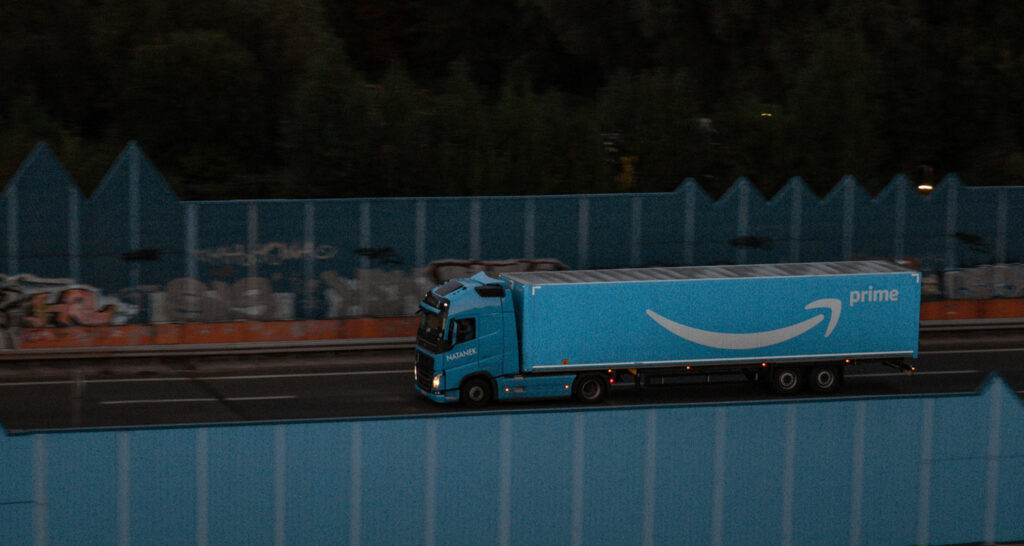Perhaps one of the first questions a newbie asks is “What makes an eCommerce store successful?” Now there is no easy answer, because you might have a compelling and professionally looking website, and beyond perfect ads to funnel your customers to your store, but we know that customers do not like to wait. Which is why, while they might find your products VERY interesting, delivery times can be a big set-back that could prevent them from buying from your store and looking elsewhere instead.
For example Amazon.
If you own an eCommerce store, you already know that it is almost impossible to beat Amazon’s one-day delivery times, even if you had your products in a warehouse in the very same country where you trade. But what if I told you that you don’t have to fight Amazon?
As the old saying goes: “If you can’t beat them, join them”.
You might have heard of the new buzz in the eCommerce community after the launching of the Shopify Amazon Integration.
So how does this integration work exactly, how can a Shopify seller benefit from all the PROs of Amazon and Shopify alike?
Keep on reading to find out!
Why Choose Amazon FBA fulfillment
Choosing the right eCommerce fulfillment can give your Shopify store an advantage over your competitors. Think of it this way: if two stores sell the same item, have the same pictures and similar price, who is the most likely to get a customer? Easy, the one that offers a faster shipping service.
As we said already, clients want their goodies in hand right about NOW!
If you choose to deliver your products with Amazon FBA, your clients will get their parcels right the next day. Not bad of a deal is it?
We’ll tell you more, if you use Amazon FBA, your products will be stored in their warehouses across the destination country to make deliveries easier and faster.
You would not have to worry about storage, leasing of a warehouse space or using any other third-party fulfillment center.
Amazon’s personnel will proceed to pick, pack and ship the orders directly to your customers, as soon as they are placed. This means that you would not have to worry about anything like packaging, bubble wrap, or wrong variants shipped.
Amazon allows you to scale the market fast and will not have any additional recurring monthly fees, besides storage fees and a fulfillment fee to be paid when you get an order.
Pros of Shopify Amazon Integration
What are the advantages that you can enjoy, should you choose to connect your store to the eCommerce giant?
- Global Exposure: if users do not know your company, they can still discover it on Amazon Marketplace and buy from you;
- Storage Space: Amazon will store your items, so you won’t have to worry about renting a warehouse, or another third-party fulfillment center.
- Recurring Monthly Fees, you are only charged for storage:
- Jan-Sept: $0.75 per cubic foot (Standard) and $0.48 per cubic foot (Oversize)
- Oct-Dec: $2.40 per cubic foot (Standard) and $1.20 per cubic foot (Oversize)
- Packaging: all will be arranged by Amazon’s employees;
- Order Processing: all the fulfillment logistics (pick, pack and ship) will be arranged by Amazon.
- Fast Shipping: your products will be store in different Amazon warehouses to allow fast shipping to your clients;
- Affordable Shipping Rates: cheaper than most fulfillment centers, in the US for example:
- Next-Day Delivery for up to 16 oz parcel costs only $12.80
- Expedited Delivery for 10 oz parcel costs only $5.69
- Multi-Channel Fulfillment: allows to focus on marketing and fast scaling;
Cons of Shopify Amazon Integration
Now that we have gone through all the advantages of the Shopify Amazon Integration, it is time to analyze the downsides:
- Amazon Seller Central Account: in order to use the multi-channel fulfillment service, you must open an account, which costs roughly $39.99 a month + selling fees;
- Customer Service: should there be issues with your items, you are still in charge of the customer care, Amazon only delivers the orders, everything else is on you;
- Packaging: if your customers buy from your store, they might be confused when their orders arrive in Amazon-branded Packaging;
- PRO TIP: tell your customers that this is a service that Amazon offer to company as he offer server space, cloud space or other B2B services;
- No International Order Fulfillment: Multi-channel fulfillment via the Shopify Amazon Integration will not cover orders coming from other countries;
- Monthly Storage Fees: if your products do not sell well, you might have to pay more in storage;
- PRO TIP: Try stocking only your best-sellers and the products that you know for sure are selling.
How to integrate Shopify with Amazon
At this moment, the integration is only available to Amazon sellers with Amazon Marketplace accounts for Canada and the US, depending on the store’s currency.
The first step, if you want to get your orders fulfilled by Amazon, is to set up an Amazon Seller Central Account.
Once you have your Seller Account, login in your Shopify account and connect the two by following this link.
After accepting all the conditions and terms, you will redirect to the Shipping setting on Shopify.
For the system to work properly, the Shopify Shipping settings must match Amazon’s shipping settings, please pay attention to this passage otherwise your orders won’t be fulfilled.
First of all you need to decide the Amazon shipping rate that you prefer between:
- Standard Shipping
- Two-Day Shipping
- One-Day Shipping
Then on your Shopify > Manage rates, create the same shipping rate for Amazon. If you need to find Amazon shipping cost you can visit the Amazon’s Fulfillment fees page.
Your Shopify shipping rate page should look like this:
Now that we set up the shipping rates you must select which products will be fulfilled by Amazon.
If you already have some products in your store, select one of them and visit the shipping section on the product page.
First of all, check that the weight and SKU that you saved match with the ones that are present in your Seller Central account.
Then, under Inventory Policy, select Amazon Marketplace Web tracks this variant’s inventory and on the Fulfilment service menù and select Amazon Marketplace web.
On the other end, if you want to associate your Amazon FBA inventory with a new product page on Shopify, create a new product page and under inventory select Amazon Marketplace Web.
Then visit your Amazon Seller account, navigate to the Inventory page and click on Manage Inventory. There you can see all the products that you have in stock and copy the Amazon SKU.
Paste your number in your Shopify product page and they go back to the Amazon Seller account to copy and paste also the weight of the products.
To find the correct weight, visit the Amazon Seller account and go to the Inventory page. Click on manage inventory and go to the estimated fee per unit sold column where you will find under the menù the link Go to Revenue Calculator. Last but not least, remember to check the box Track quantity to have your store always up to date with your inventory.
How to calculate Amazon FBA Costs
As you can imagine if you use Amazon to fulfill your orders you need to pay a monthly storage fee, plus add pick/pack fee and shipping fee for each of your parcels.
To calculate your monthly storage fee you can click here.
To calculate your shipping, you need to consider the shipping rate you are using and the size tier your item falls under. Just to make an example, if you select “Priority next-day shipping”, package size “Small standard: 16 oz or less” you will pay $12.80. Find all the shipping prices here.
How to fulfill your Shopify orders with Amazon FBA
After finishing all the passages described above, Amazon automatically syncs your orders with Shopify, but you’ll still need to manually fulfill the order inside Shopify.
To do that, you need to visit your Shopify Dashboard and click on Orders. Select the order you want to fulfill and click on Start fulfilling. Click on Mark as Fulfilled and then click on Fulfill items. This order will be marked as Pending Fulfillment and changed in Fulfilled as soon as Amazon accepts the order.
Of course if you manage many orders, manual fulfillment is not the best solution for you. In this case you can consider automating this process by selecting an additional Shopify app.
If you visit the app Store and write fulfillment with amazon you will find a few that offer free trials.
How to Ship Products to Amazon FBA
Now that you’ve connected Amazon to Shopify, you’ve completed all the settings to fulfill your orders but you still need to ship the products to Amazon FBA to start selling.
And as you can imagine this process is not super easy: you need to source your products, negotiate with your supplier and ask him all the details that you need to complete the Amazon FBA listing.
You need to:
- send Amazon details of your shipping such as size of the cartoon, weight, number of pieces and so on.
- upload these details to Amazon to get the address for your warehouse.
- download the labels for the packages
- send them to the supplier together with the shipping address
- trust that the supplier will pack your item following Amazon FBA guidelines.
Plus if you have been in the eCommerce business for a while, you might have noticed that many online sellers source their products from Chinese suppliers and this means that you need also to:
- Find trustworthy suppliers;
- Evaluate the products’ quality before buying stock with 100s of pcs;
- Overcome a language barrier, as not many suppliers speak good level English;
- Explain precisely how to ship your products in Amazon approved packaging;
To avoid all this headache you simply can use a trustworthy partner like Yakkyofy. With us you can easily
- source for you quality product from China;
- get a product sample evaluation in China before to purchase e a big order;
- get packages 100% complaints with Amazon FBA guidelines
- receive price comprehensive of all the costs:
- Items Price;
- Shipping Costs;
- Custom Clearance Costs;
With us you can even ask for products and packaging branded with your own logo using a smooth online process and get professional help to pass through customs.
So what are you waiting for?










